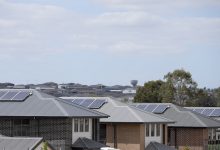Energy technology company SwitchDin has unveiled plans to build the Southern Hemisphere’s largest dedicated test lab for distributed energy resources (DER) in the New South Wales coal and industrial hub of Newcastle.
The lab, co-funded by the NSW government, will emulate a complete microgrid environment to test a wide range of cutting edge DER systems and technologies, ranging from solar inverters, to home batteries, EV chargers and smart loads including hot water systems and heat pumps.
SwitchDin says the testing will enable the company to optimise the efficiency of various DERs in providing grid services and participating in rapidly evolving energy markets.
DERs are recognised as critical to the energy transition, hastening the shift away from fossil fuels and helping homes, businesses and national grids avoid predicted energy insecurity as the transition begins to bite.
They include any in-home or -business renewable energy resources, including batteries, EV charging stations, and solar panels, as well as energy loads, like pool pumps, that can be time-shifted.
When managed by smart systems (like SwitchDin’s Droplet software), DERs can also provide the grid with energy at times of need and adjust energy usage and storage within a home or business to respond to price fluctuations.
Better control and visibility of these traditionally invisible resources is becoming increasingly important – particularly when it comes to the huge amount of solar being generated on home and business rooftops, which when not being consumed by households is usually sent to the grid.
Just this week a new report by SunWiz found that when the 2,000 MW Liddell coal-fired power plant is closed in April, the collective supply of rooftop solar will become Australia’s biggest electricity source for the first time.
This abundant rooftop solar power is a boon for the clean energy transition and for electricity demand and prices during the day, but as SwitchDin’s COO Marc Sheldon points out, it also promises to create a whole set of new problems for the grid if it is not managed properly.
“This can result in over voltage, you have frequency problems and unmanaged assets,” says Sheldon. “If you can’t manage this, you might have oversupply, and if you have oversupply and you don’t have appropriate demand you can’t get rid of it, and your grid will fail.”
That’s just one of the solutions intelligent DER systems can provide.
“Enabling these assets, like batteries and other generating devices, to work in synchronicity allows you to maximise the hosting capacity of the grid, so you can have more DERs in one place,” he says.
“It also maximises the usefulness of those devices, so you minimise spending by the DNSPs on wire assets, you minimise costs of operating the grid, and you maximise the usefulness of those assets for both the owner as well as other participants in the grid.”
The Electricity Network Transformation Roadmap compiled by Energy Networks Australia and CSIRO estimates that by 2050, DERs may contribute up to 45% of Australia’s electricity generation capacity, making them big business.
SwitchDin’s new lab will emulate grid events and faults in order to test how a wide range of different DERs will respond. The lab will utilise photovoltaic (PV) and grid simulators to run testing scenarios such as phase imbalances, harmonics issues and the dispatch of Frequency Control Ancillary Services (FCAS).
While SwitchDin already runs such tests in an existing facility, this new lab at its new head office in Newcastle will enable the simulation of grids outside of Australia’s as the company prepares to expand its offering internationally.
This is important, because foreign grids often operate under slightly different parameters – the US grid operates on a frequency of 60 Hz, while Australia operates on 50 Hz, as one example. The lab will also provide the testbed for new products and services, about which Sheldon is tight-lipped.
The NSW government is providing financial support through its Jobs Plus Program. According to SwitchDin, that support will lead to the creation of 55 direct and 33 indirect full-time equivalent (FTE) jobs by June 2024. The exact amount of funding was not provided.
“The support that we received from the NSW government Jobs Plus Program allows us to increase the size of our team in New South Wales,” says Sheldon. “This will be instrumental in supporting development work, the test lab and expanding our customer base.
“This is a win for New South Wales as it positions itself as a state that is driving Australia’s clean energy transition.”
NSW minister for enterprise, investment and trade Alister Henskens says the government’s Jobs Plus is propelling home-grown businesses, as well as attracting global heavyweights to expand in the state.
“These jobs will boost the state’s thriving economy, help to develop even more world-leading products, and cement NSW as Australia’s innovation capital,” says Henskens.










